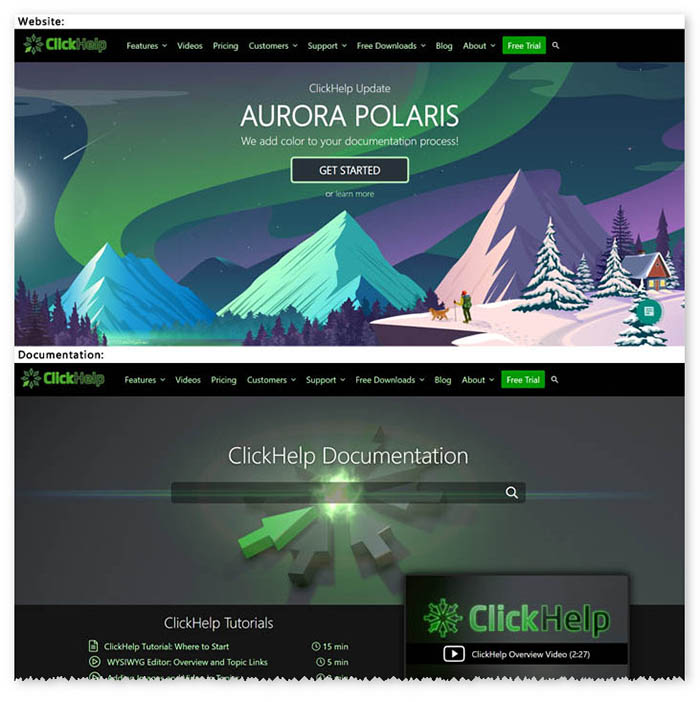Web Help: Pros and Cons
 ClickHelp Teamin ClickHelp Features on 5/17/2019 — 4 minute read
ClickHelp Teamin ClickHelp Features on 5/17/2019 — 4 minute read ClickHelp Teamin ClickHelp Features on 5/17/2019 — 4 minute read
ClickHelp Teamin ClickHelp Features on 5/17/2019 — 4 minute read

Online documentation was a very logical next step for technical writing. The Internet has become so easily accessible that looking up something online seems like a natural part of our lives. So, storing documentation online is not only a matter of convenience; by now, it has become common sense.
Help authoring tools like ClickHelp allow creating online documentation portals for your technical docs. Which basically means having all technical documents available in one place.
And, still, situations exist when readers can’t reach online documentation. For example, when the readers work in an isolated network, or when a person simply doesn’t have an Internet connection at the moment. One of the common solutions here is providing docs in the PDF or CHM (for Windows) formats, which can be easily done with ClickHelp, as well. But it still isn’t a silver bullet – PDF requires software, and, besides, looking for answers there can be very tough since it is a single document; while CHM works only for Windows…
Luckily, a better solution exists – Web Help. This format unites the lightweight nature of online browser-based documentation and the possibility of reading the docs without the Internet connection.
Web Help is a documentation format that can be delivered both online and through locally stored HTML files (plus resource files). In the second case, you get a set of files that you can store in a local network or just on a hard drive, and open them in a web browser without the need to have an Internet connection to read a browser-based user guide.
Web Help can look different in terms of style and navigation. In ClickHelp, a variety of branding options are available for Web Help outputs like branding CSS styles and customizing the files Web Help package contains to make it look more similar to your website. Check out how our Web Help documentation has the same menu as our website:

Why is Web Help a good solution? Well, there are several reasons.
To sum it up a little – Web Help allows creating a fully-functional browser-based documentation portal without any Internet connection required.
So far, Web Help looks very promising. But are there any drawbacks? Any technical solution has its field of applicability where it works best, and the Web Help technology also does. But, we believe that those shortcomings are more so minor inconveniences than serious flaws.

Web Help can be a nice solution for readers in isolated networks or in case someone needs to access a user manual offline. Web Help is more universal than CHM as the latter works for Windows users only, and more convenient than PDF due to advanced navigation and interactive elements.
Web Help’s drawbacks are connected with its maintenance – if you are hosting Web Help yourself, then you’ll have to manually set up and maintain a doc portal and manage permissions and access. All in all, we think that Web Help is a good approach to offline user manuals. And ClickHelp allows you to have both an online version hosted in your portal, and an offline version shipped with your product in the Web Help format.
Good luck with your technical writing!
ClickHelp Team
Author, host and deliver documentation across platforms and devices
Get monthly digest on technical writing, UX and web design, overviews of useful free resources and much more.
"*" indicates required fields